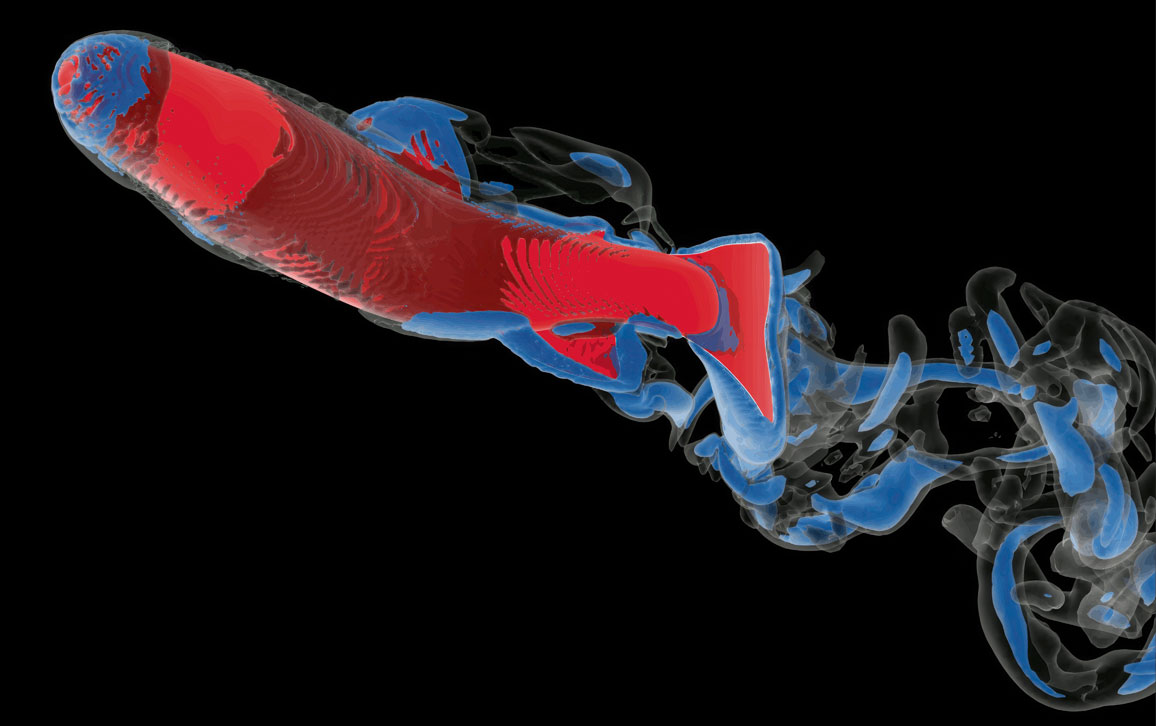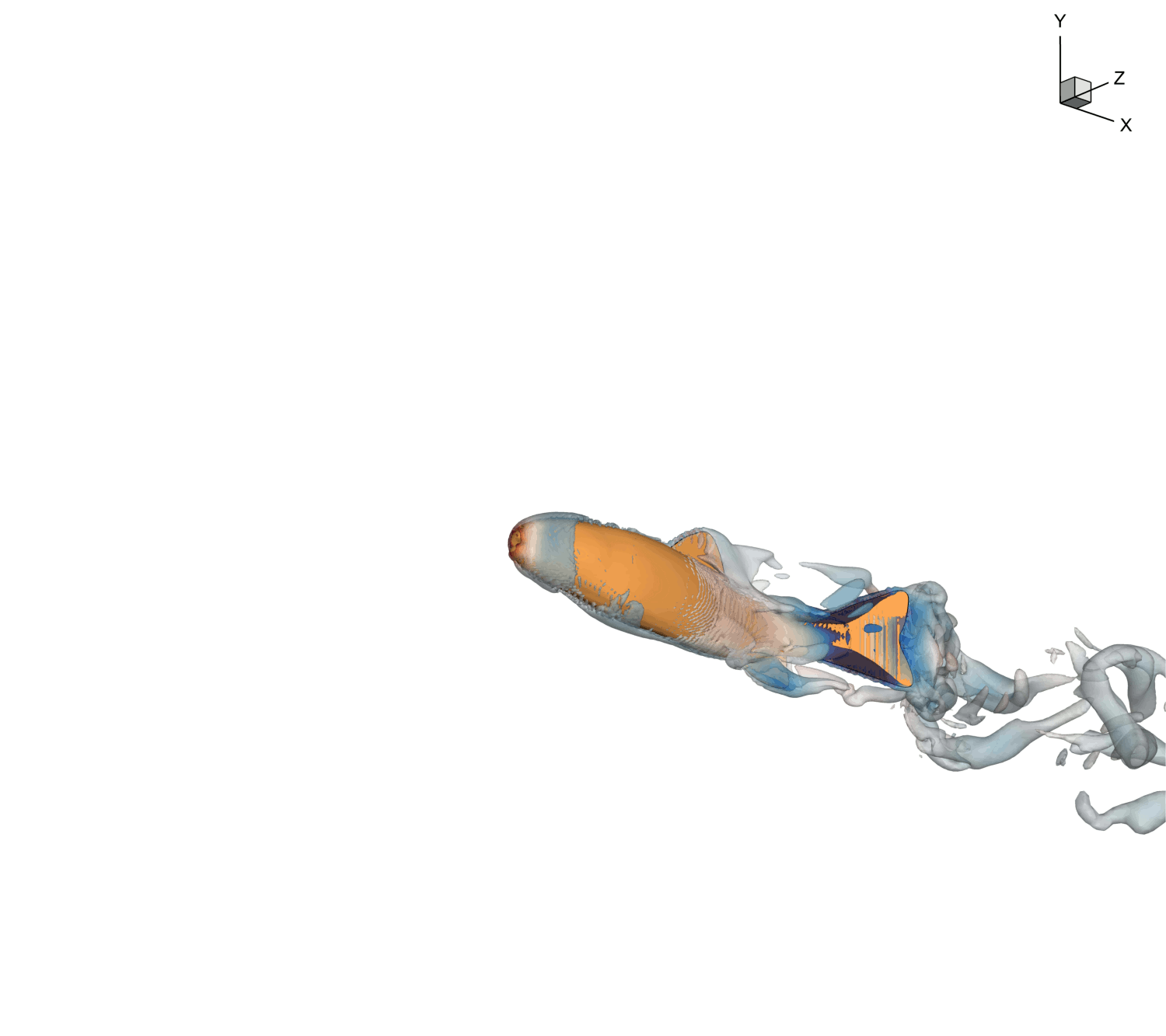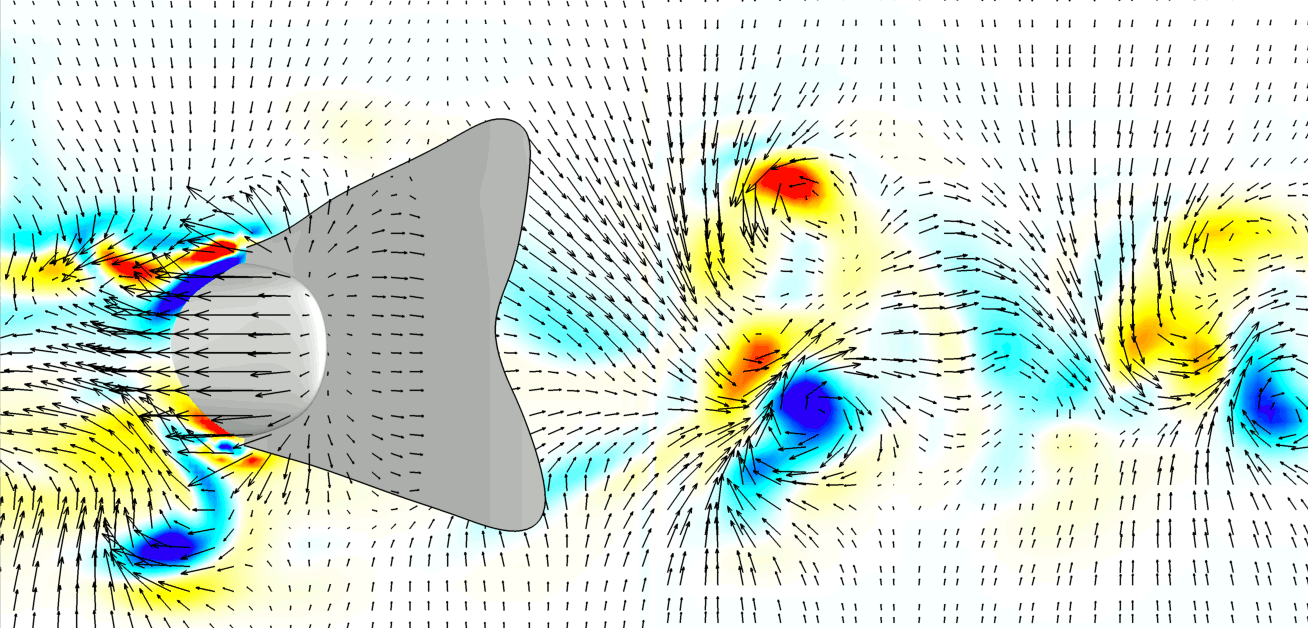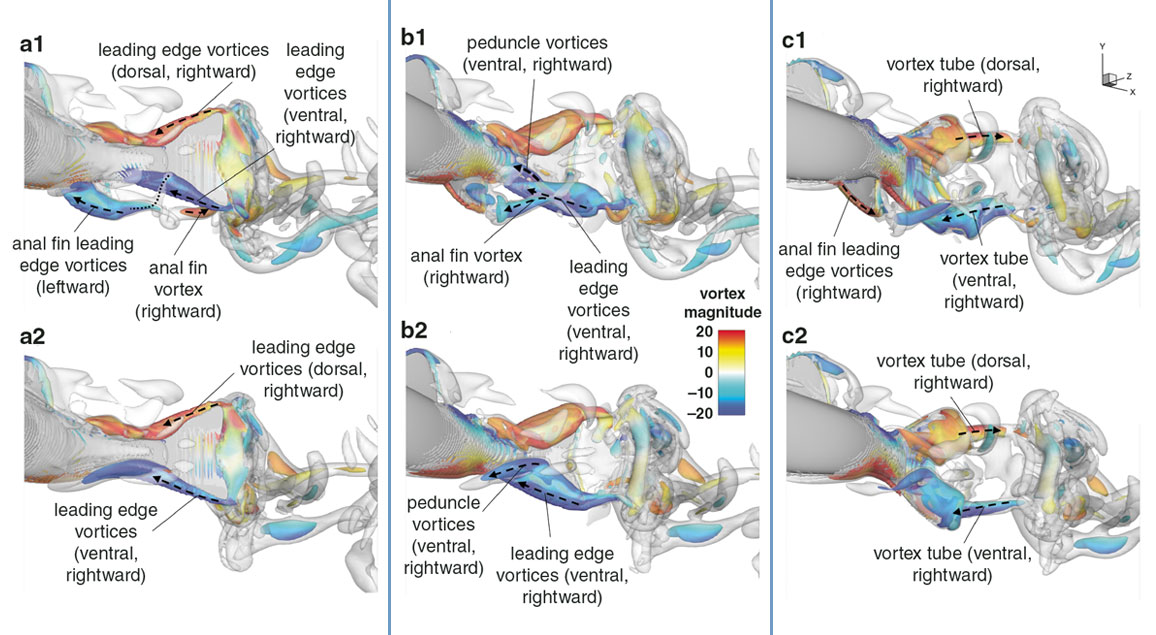Fins Working Together
By Fenella Saunders
Interactions between the swirling eddies created by a swimming trout show how its body is optimally laid out for energy-efficient movement.
Interactions between the swirling eddies created by a swimming trout show how its body is optimally laid out for energy-efficient movement.

Trout, the target of many river fishing trips, may seem ordinary, but it turns out that they are uniquely specialized for their environment. Trout migrate to spawn, with some species traveling more than 200 kilometers, and new research shows that their bodies have some unrivaled adaptations for efficiency that reduce the energy they use for long-distance swimming. Haibo Dong, a mechanical engineer at the University of Virginia, and his colleagues have created models of the turbulent vortices that fish produce as they move their fins. The models show how the swirling water from one fin interacts with other fins. These detailed computer models, which Dong and his colleagues describe in a paper in Physical Review Fluids, can also simulate what would happen to that efficiency if fin locations were adjusted or fins altered in size.

A computer model of a trout started with 2D video of an actual fish swimming in a tank with suspended particles. A laser illuminated the particles to highlight the water flow changes as the fish swam. Combined with data about fish morphology and fluid dynamics, the model revealed that trout are highly efficient swimmers because of the precise placement of their bottom, or anal, fin.
All images courtesy of Haibo Dong.
Dong and his collaborators first placed fish in a laboratory tank in which the water had been seeded with tiny particles that glow under laser light. Fish in the tank swam against an induced current while a camera captured the displacement of the fluorescent particles around them. The researchers then used this 2D video footage taken from different angles to create a detailed 3D computer model reconstructing the fish movement and the turbulence created with the swish of each fin.

“When the fish interacts with the water, the fish is going to disturb the flow and the water will rotate,” Dong explains. Smooth flow over a fish’s body reduces drag, but vortices disrupt that fluid attachment and are “shed” from the body. “These vortices have all the information about how the flow interacts with the body,” Dong says. “They tell us when the fish can produce thrust and how energy can be saved.”
Trout, like all fish, have multiple fins. Most familiar may be the dorsal fin on the back, and the caudal fin, or the tail fin. In addition, trout have pectoral fins near their heads and pelvic fins near the center of their bellies. Toward the back of the trout, there is a small adipose fin on top, and an anal fin on the underside (which is known as the ventral side). The advanced simulations that Dong and his colleagues made were able to show for the first time that vortices coming off the anal fin are not simply shed away, but go on to interact with the caudal fin, combining with its own vortices and increasing the amount of thrust that the tail can produce.
In addition, the team was able to model what would happen if the anal fin were moved up or back, if it were made bigger or smaller, or if it were removed entirely (see figures below). The researchers found that for the trout model with the anal fin, the tail fin produced 8.6 percent more thrust and the body produced 18.6 percent less drag, compared with the model without the anal fin.

The images below compare a model trout with an anal fin (a1, b1, and c1) and one without an anal fin (a2, b2, and c2), for three time steps during a full right-left cycle of the trout’s tail fin (rightward strokes are blue). Trout have a wide tail (also called its peduncle) and a shorter caudal fin than some other types of fish, and that combination creates elongated vortex rings in the far wake of the tail fin (see figure at top). The vortex rings have pairs of parallel counterrotating structures called vortex tubes, which generate a strong backward-facing jet and produce thrust. Without the anal fin, the model trout produces smaller vortex tubes, weaker jets, and less thrust.

“The whole trout is optimized for efficient swimming,” says Dong. “The body has a wavelike motion that is coordinated with the bending of the tail and with the vortex shedding. When the vortices are shed to the rear, the tail is at just the right position to interact with them.”
Dong notes that the body setup is really specialized for the trout’s long migrations, and other fish have different fin arrangements because their survival priorities are not the same. Many fish, for instance, have the dorsal fin and anal fin placed symmetrically on their bodies, not with the anal fin toward the back of the body as it is on the trout. A tuna that lives in the open ocean relies more on speed than efficiency, so its fin layout reflects that priority, Dong says.
Dong and his team are now working on models that show what happens when trout move in large schools, as they do during migration. He suspects that the vortices from other fish will also help a trout increase its swimming efficiency, in much the same way that birds benefit from flying in formation. But ultimately, he hopes that these discoveries will improve underwater vehicles, which are used to explore and monitor the ocean. “Underwater vehicle design never considers those kinds of fin interactions, and drag is certainly the biggest problem for underwater vehicles,” Dong says. “This simple placement of an anal fin, without doing anything else, can immediately improve the performance quite a lot.”
Click "American Scientist" to access home page
American Scientist Comments and Discussion
To discuss our articles or comment on them, please share them and tag American Scientist on social media platforms. Here are links to our profiles on Twitter, Facebook, and LinkedIn.
If we re-share your post, we will moderate comments/discussion following our comments policy.